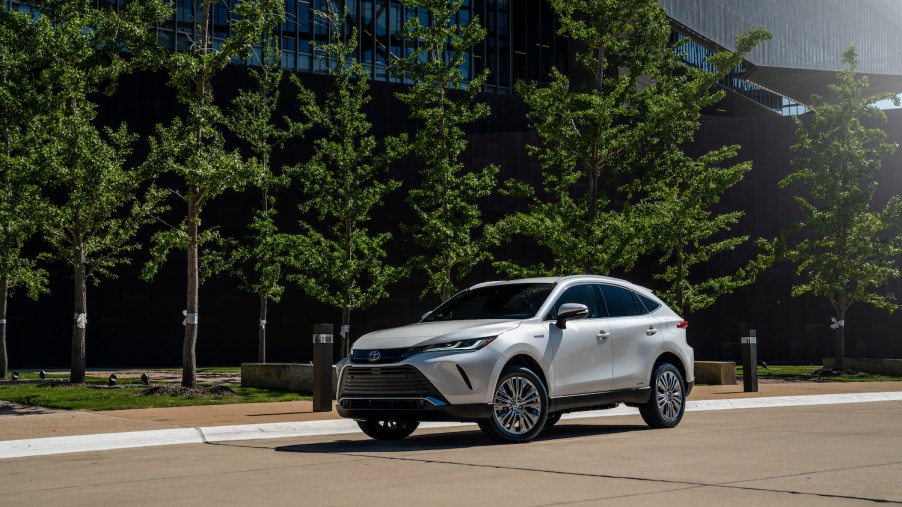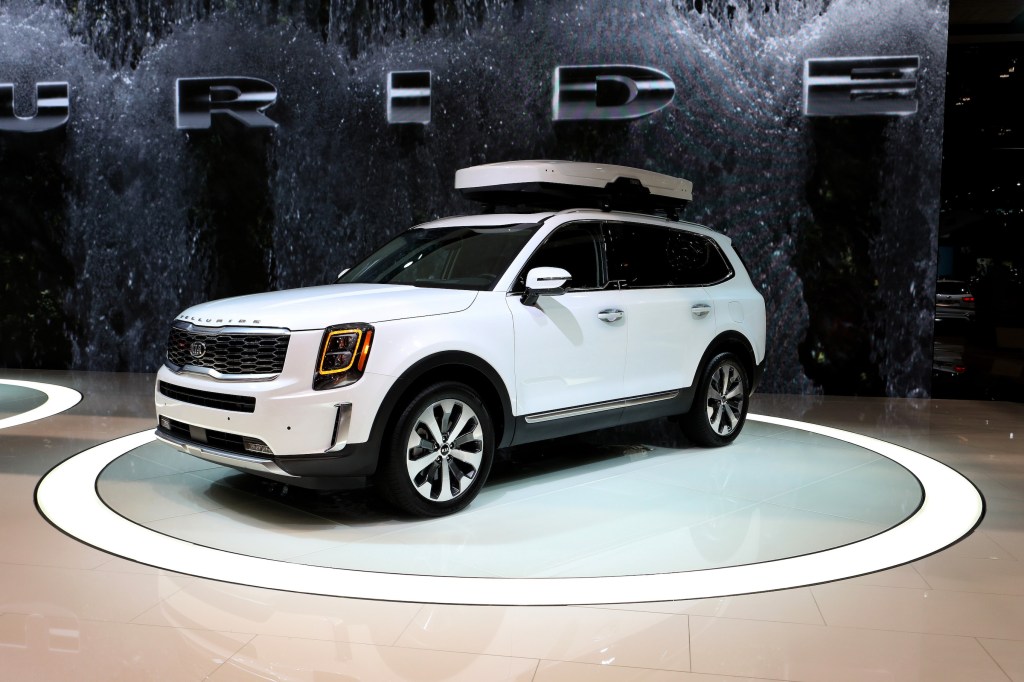
The 2021 Toyota Venza Just Doesn’t Stop as Well as the 2021 Kia Telluride
When considering a brand-new SUV to put in your driveway, you’re often stuck looking at trim levels, available features, and pricing. However, there are many basic components we often take for granted as being good enough. To test this out, Consumer Reports tested the 2021 Toyota Venza and the 2021 Kia Telluride in a crucial emergency braking test. Unfortunately, the Toyota didn’t ace this test as the Kia did.
Why didn’t the 2021 Toyota Venza impress Consumer Reports?
The redesigned 2021 Toyota Venza makes for a great hybrid SUV on paper. For its $32,470 base price, you get tons of tech, interior space, and standard safety features. Under the hood lives an all-wheel-drive electrified powertrain. According to Car and Driver, the 2.5-liter inline-four-cylinder engine develops 219 hp. However, the main benefit is its claimed fuel-efficiency figures of 40 mpg in the city and 37 mpg on the highway.
Despite this, the brand-new Toyota Venza didn’t perform well in this Consumer Reports braking test. Consumer Reports tested all of these SUVs in the same place under similar conditions to keep things consistent. The test involves traveling at 60 mph before slamming the brakes. The purpose is to measure the braking distance to judge how well the SUV performs under emergency situations. Additionally, Consumer Reports conducted tests both in dry and wet conditions.
According to Consumer Reports, the average braking distance for an SUV is around 134 ft. Unfortunately, the 2021 Toyota Venza completed the test in 137 ft. Consumer Reports states that hybrid vehicles typically fail these tests thanks to their fuel-efficiency-focused tires, which offer little grip. In contrast, the 2021 Kia Telluride managed to excel.
The 2021 Kia Telluride is the king of the hill
Unlike the 2021 Toyota Venza, the 2021 Kia Telluride does not feature an electrified powertrain. Under the hood lives a naturally-aspirated 3.8-liter engine developing 291 hp. The benefit here is that the Telluride isn’t locked into using an eco-friendly tire. However, the downside is that the Kia consumes 20 mpg in the city and 26 mpg on the highway, significantly more than the Toyota.
On the other hand, the Kia Telluride excelled in this braking distance test. According to Consumer Reports, the Telluride took just 127 ft to come to a complete stop, beating the 134-ft average. Since this score covers various traction scenarios, this Telluride score means the SUV performs consistently across the board.
It is also worth noting that the Telluride is one of Consumer Reports’ most recommended SUVs with excellent predicted reliability and owner satisfaction scores.
How do other SUVs stack up?

In case neither the 2021 Kia Telluride nor the 2021 Toyota Venza is on your shopping list, let’s look at some competitors. According to Consumer Reports, the Ford Edge and Subaru Ascent aced this test with an average stopping distance of 129 ft.
On the other hand, the 2021 Toyota Venza isn’t the worst performer either at 137 ft. This is because the Mazda CX-9 and the Toyota Highlander Hybrid took 139 ft and 141 ft, respectively. As you might expect, the larger Highlander Hybrid also features eco-friendly tires, limiting its performance in this test. However, the worst of all is the Jeep Wrangler Unlimited, which took a whopping 144 ft to come to a complete stop.
Regardless, as you navigate the trim levels and pricing, you now know which brand-new SUVs have the best emergency braking performance.


